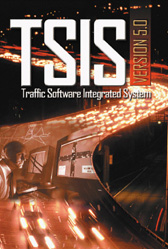| Skip
to content |
|
|
|
Traffic Analysis ToolsThis publication is an archived publication and may contain dated technical, contact, and link information.Corridor Traffic Management ChallengesEntering the 21st century, our nation's transportation system has matured. Physical infrastructure is expanded by a fraction of a percent each year. Yet congestion continues to grow at an alarming rate, increasing the potential for crashes, undesired long delays, pollution, higher operating costs, and adverse sociological effects. As our transportation system becomes more sophisticated and complex, transportation professionals must adopt innovative ways of managing existing systems more efficiently. These professionals are called upon to increase the productivity of existing transportation systems through the use of operational improvements. As we deploy the highly sophisticated technologies of hardware and software systems, there will be an increasing need to:
The Role of Traffic Analysis ToolsTraffic analysis tools have emerged as one of the most efficient methods to optimize, evaluate, and simulate the operations of transportation facilities and systems. Traffic analysis tools are designed to assist transportation professionals in evaluating strategies that best address the transportation needs for their jurisdiction. Specifically, traffic analysis tools can help practitioners: 
What We've LearnedThe transportation community is facing two fundamental but interrelated challenges. First, we must accelerate and expand the utilization of traffic analysis tools. Second, we must ensure that the tools developed can be easily validated to demonstrate that the output is accurate and reliable. Tools need to give the user results that are consistent with current traffic management practices and principles, not to mention real-world traffic patterns. They need to produce results that are perceived as trustworthy by the typical traffic professional. Part of the solution to these challenges rests in the development of traffic analysis tools that are easier to use, more robust in their application, and more reliable in their results. The other part requires a deployment strategy for tools that is sensitive to the concerns and needs of the user community as well as committed to encouraging the growth and vitality of the model development and consultant community. Rather than speculate as to the needs and concerns of the transportation community, the Federal Highway Administration’s (FHWA) Office of Operations has reached out to the traffic analysis stakeholder community for feedback. Many stakeholders think that FHWA should continue to promote the deployment of traffic analysis products and also provide assistance for specific development activities but not engage in activities that would place FHWA in direct competition with the commercial market. Many feel that it is incumbent upon FHWA to explore strategies so that a balance between the development and deployment of traffic analysis tools is achieved. They have further stated that less involvement by FHWA has limited their ability to get training on traffic analysis tools in recent years. It is imperative for FHWA to find an overarching principle of a deployment paradigm developed in parallel with a rapidly evolving model development strategy. Future Program Direction The Office of Operations formulated the Traffic Analysis Tools Program in an attempt to strike a balance between efforts to develop new, improved tools in support of traffic operations analysis and efforts to facilitate the deployment and use of existing tools. There are two tracks under the Traffic Analysis Tools Program: the development track and the deployment track. The Development Track focuses on models that are easier to use, more robust in their application, and more reliable in their results. This track concentrates on:
The Deployment Track is intended to ensure sensitivity to the needs and concerns of the traffic analysis stakeholder community. This track concentrates on:
Through the Office of Operations Traffic Analysis Tools Program, our partners and customers will expand their use of analysis tools and innovative analysis approaches that consider a system-level approach and enhance mobility. They will gain insight on best practices and lessons learned in operational analysis. They will also gain a high level of confidence in utilizing the analysis tools for their local needs. In promoting these analytical tools and decision support systems, the FHWA will assist transportation professionals in finding solutions to traffic congestion and management problems. For more information about Traffic Analysis Tools, visit https://ops.fhwa.dot.gov/trafficanalysistools/index.htm For more information on FHWA Office of Operations activities, visit our web site at https://www.fhwa.dot.gov/operations April 2004 FHWA-OP-04-045
|
|
United States Department of Transportation - Federal Highway Administration |
||